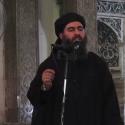 |
 |
San Bernardino Shooting a Terrorist Attack with al-Qaeda and ISIS Footprints

Key Take-away: The San Bernardino shooting of December 2, 2015 was a terrorist attack conducted by perpetrators inspired by the Islamic State of Iraq and al Sham (ISIS) and possibly linked with and inspired by al Qaeda. The attack displays some of the sophistication and signatures of past al Qaeda attacks. Drawing a sharp dividing line between al Qaeda and ISIS threat groups when it comes to attacks on the homeland is difficult despite differences between them in the Middle East. The U.S. must expect that both groups will devote even greater resources to encouraging and supporting such attacks here and in Europe now that their feasibility has been demonstrated in both regions. American and Western efforts against al Qaeda and ISIS globally are failing and require fundamental reassessment.
View this timeline online here.
Individuals inspired by the Islamic State of Iraq and al Sham (ISIS) and with links to al Qaeda conducted the terrorist attack in San Bernardino on December 2. This attack was the first al Qaeda- or ISIS-related in the U.S. by a skilled shooter team using both guns and explosives, a technique that both groups used in the attacks in Mumbai of November 2008; on the Westgate Mall in Nairobi, Kenya in September 2013; on the Paris offices of Charlie Hebdo in January 2015; and on several targets in Paris on November 13, 2015. It marks a step-change in the threat that both al Qaeda and ISIS pose to the security of the American homeland.
Key facts that crystallized ISW and CTP’s original assessment of a link to al Qaeda or ISIS include reports that Tashfeen Malik had pledged allegiance to ISIS; the preparations for and character of the attack itself; the travel patterns of her husband and co-perpetrator Syed Rizwan Farook; and reports of contacts with individuals associated with al Qaeda affiliates al Shabaab and Jabhat al Nusra. It is not yet clear whether Farook or Malik was the primary instigator, nor whether any al Qaeda group or ISIS specifically instructed them to conduct the attack. There are as yet no indications that this attack was part of a larger plot or prepared campaign within the United States.
The nature of the attack itself heightens concern about the ability of very small cells of terrorist-linked individuals to cause mass casualty events without the kind of footprint that would raise obvious red flags for law enforcement or the intelligence community. The acquisition of multiple weapons and large amounts of ammunition is not, by itself, indicative of any particular skill or terrorist intent. Setting aside the political debate about the ready availability of guns and ammunition in America today, it is important to note that the couple also had bomb-making know-how, the ability to acquire the necessary materials without detection and to assemble multiple such devices, and the theoretical knowledge of how to build remote-control detonators to operate on a number of explosives chained together. Their technical skills were, fortunately, insufficient to make the remote-control detonator function, a fact that no doubt saved many lives.
Coordinating the acquisition of all of these materials without detection, the assembling of explosive devices, coupled with some minimal training to enable team members to quickly collect their gear, move to the target, place the explosives, fire many rounds without hitting each other, move back to their vehicle, and drive off are marks of an advanced capability. Both al Qaeda and ISIS have developed and perfected these techniques and have been making them available to suitable individuals and groups in order to conduct attacks like those in Paris and San Bernardino. The U.S. must expect that these groups will devote even greater resources to encouraging and supporting such attacks here and in Europe now that their feasibility has been demonstrated in both regions.
This attack seems likely to be the result of cultivation, inspiration, and possibly planning initially begun by al Qaeda-affiliated groups or individuals, and then either coopted by or simply dedicated to ISIS. Farook’s travels and itinerary suggest that the start of his radicalization may have predated the re-emergence of ISIS as a major player in June 2014. His connections, as noted in the graphic, ran to al Qaeda affiliates al Shabaab and Jabhat al Nusra rather than to ISIS. Yet Malik pledged to ISIS before or during the attack, and ISIS followers have been cheering the attack and calling them both “lions of the caliphate.” It is nevertheless an interesting coincidence that the attack followed by a day the release of a statement by al Qaeda leader Ayman al Zawahiri calling for precisely such attacks against the West.
The confusion about the links between these two individuals and al Qaeda and ISIS may clear up as more information emerges, but one thing is already clear—it would be a mistake for Americans to imagine that we can draw a sharp dividing line between al Qaeda and ISIS threat groups when it comes to attacks on our homeland. Americans must also recognize that these groups can now conduct more sophisticated and deadly attacks than the single-shooter attack at Fort Hood in 2009.
It is far too soon to articulate appropriate responses to this particular attack. Sober assessments of the performance of the U.S. intelligence community and federal and local law enforcement will reveal whether there were any failures and what can be done to improve the likelihood of detecting and disrupting such attacks in the future. The attack strongly suggests, however, that American and Western efforts against al Qaeda and ISIS globally are not succeeding and must be fundamentally re-assessed.